On View
Jeff Koons Wants to Teach Brits About Transcendence With His New Show at Oxford—and Tickets Are Selling Out Fast
The mini-retrospective includes keys works from across the artist’s career.
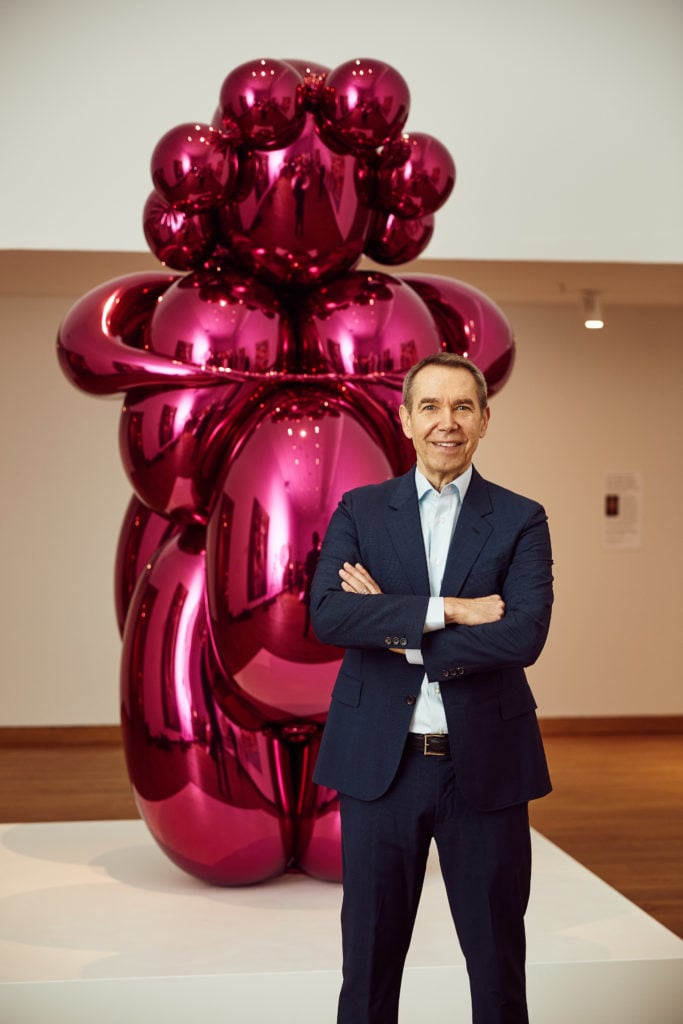
The mini-retrospective includes keys works from across the artist’s career.

Naomi Rea

Love him or hate him—and it’s definitely “cooler” to hate him—Jeff Koons is a household name. Even the Kardashians know the artist behind the balloon dogs.
But in the UK, the artist is known mainly through gallery shows, and hasn’t presented work in a public institution in ten years. That makes his new exhibition at the Ashmolean Museum in Oxford, which opens tomorrow, all the more rare.
At the press preview for the polarizing artist’s work, the museum’s director, Xa Sturgis, connected Koons’s appropriation of classical imagery to the Ashmolean’s treasured Arundel marbles, the first ancient Greek sculptures ever to come to the UK.
Koons offered his own take too, connecting his mirrored surfaces—a staple of art selfies everywhere—to the great thinkers that have walked the hallowed turf.
“I look at the reflection, at the surfaces, and I think of philosophy, I think of the idea to reflect, to contemplate,” the soft-spoken artist said. “For me, everything is a metaphor for self-acceptance, and the ability, once you accept yourself, to be able to accept other people.”
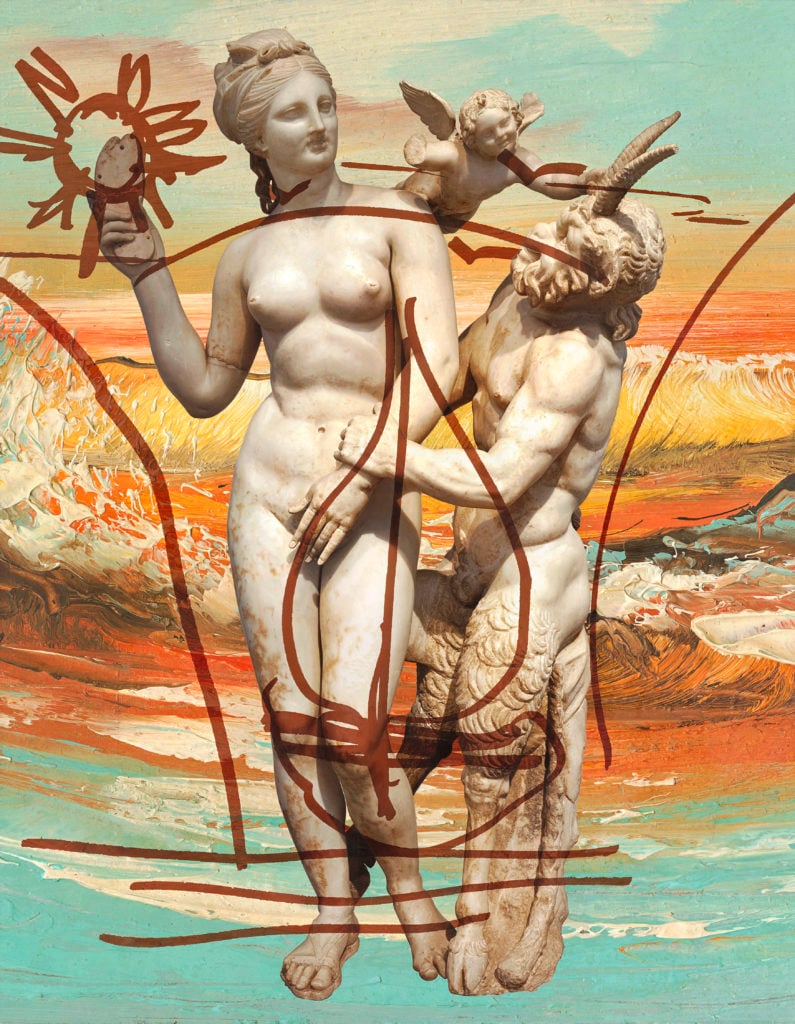
Jeff Koons, Antiquity 1 (2009–12). Collection of the artist. © Jeff Koons. Photo by Tom Powell Imaging.
Unusually for an auction house titan—Koons was the world’s most expensive living artist until he was recently dethroned by David Hockney—he hasn’t had an exhibition at a public institution since he showed his “Popeye” series at the Serpentine in 2009. Damien Hirst stepped up to fill the gap with a show at his Newport Street Gallery of Koons’s work from his own collection in 2016. The Oxford show came about after Koons traveled to the city to accept an honorary membership for his outstanding contributions to visual culture from a student-led organization, the Edgar Wind Society for History of Art.
The show is a mini-retrospective, encompassing Koons’s breakout 1985 work, the suspended basketball of One Ball Total Equilibrium Tank, through to his balloon works, embodied by the silvery and instantly recognizable Rabbit (1986). Later works include examples from his more recent “Gazing Balls” series. Of the 17 objects on show, 14 have never been exhibited in the UK.
Perhaps unsurprisingly, tickets are selling out quick. According to the museum, they’re going even faster than passes went for its prized Cézanne and the Modern exhibition in 2014, which holds the record for the Ashmolean’s fastest-selling show.
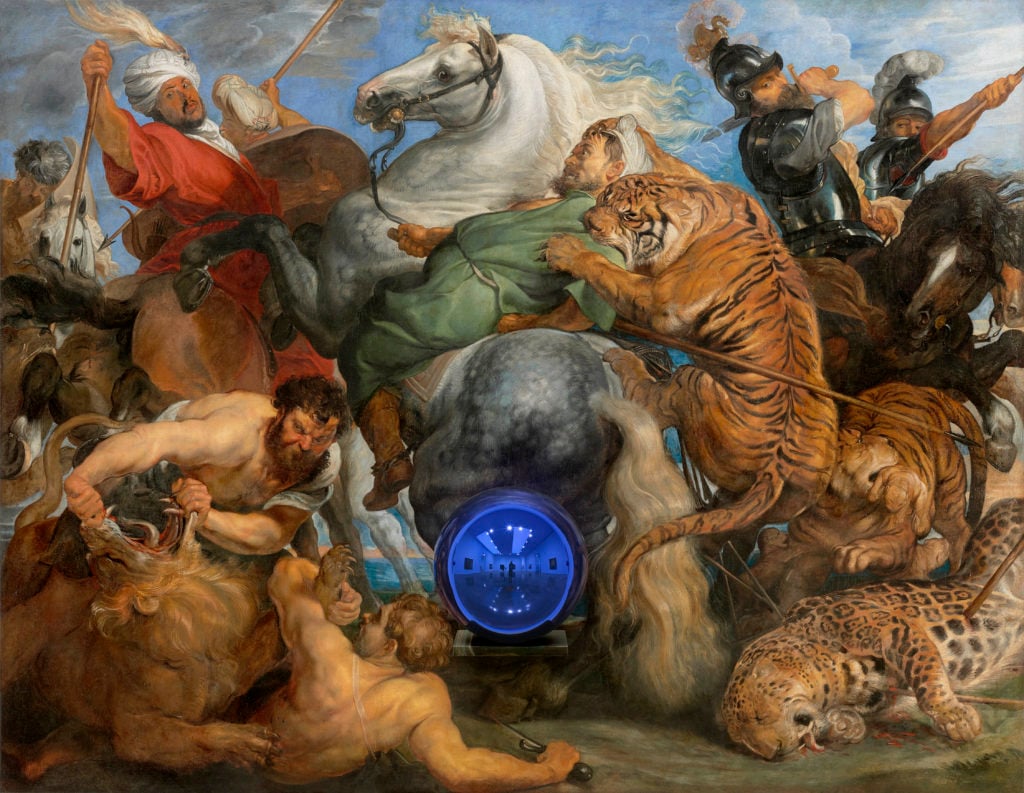
Jeff Koons, Gazing Ball (Rubens Tiger Hunt) (2015). Collection of the artist ©Jeff Koons. Photo by Tom Powel Imaging. Courtesy Gagosian.
“The way we have transcendence in our lives is by giving it up to something that we find greater than the self,” Koons said at the preview, standing among works from his “Antiquity” series and a blown-up, pink balloon version of the Venus of Willendorf.
And his references to art history continue: his “Gazing Ball” works feature replicas of paintings by artists such as Peter Paul Rubens and Titian, to which Koons has added blue gazing ball sculptures.
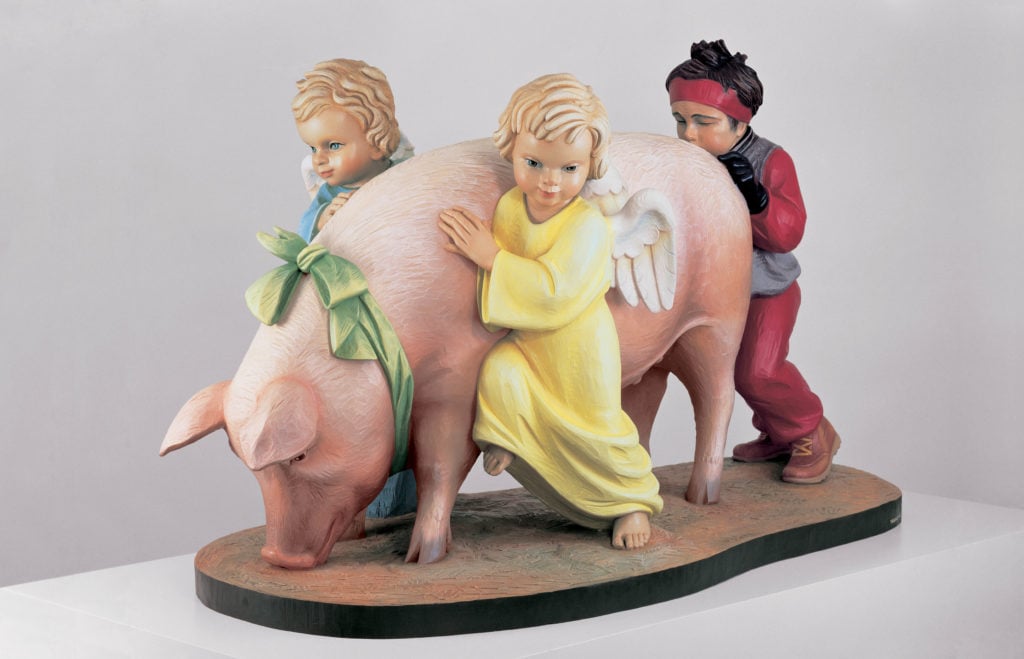
Jeff Koons, Ushering in Banality (1988). Private Collection. © Jeff Koons.
But this approach to referencing—which cynics might call copying—has landed Koons in hot water over the years. Works from his “Banality” series have been subject to a number of copyright lawsuits, and more recently, he was ordered to pay nearly $170,000 to a man whose advertisement he appropriated in 1988.
Asked at the Ashmolean about the plagiarism charges that have swirled around his work, Koons said: “I was always brought up through the appreciation of Duchamp and the idea of the readymade, and Dada surrealism, and Max Ernst and the montaging of images. The idea of appropriation sometimes is looked at in the light of taking something, a darker side, of the idea of the readymade. I’ve never really been involved in that.”
Sometimes, he says, he has sought permission to use images, contacting Jim Bean, for instance, ahead of creating Jim Beam – J.B. Turner Train in 1986.
“But I was making montages, and so I thought that by bringing different images together that I was creating enough change within some of those series. But the main thing that ‘Banality’ was trying to communicate to people was that whatever your own cultural history is, it’s perfect,” Koons says.
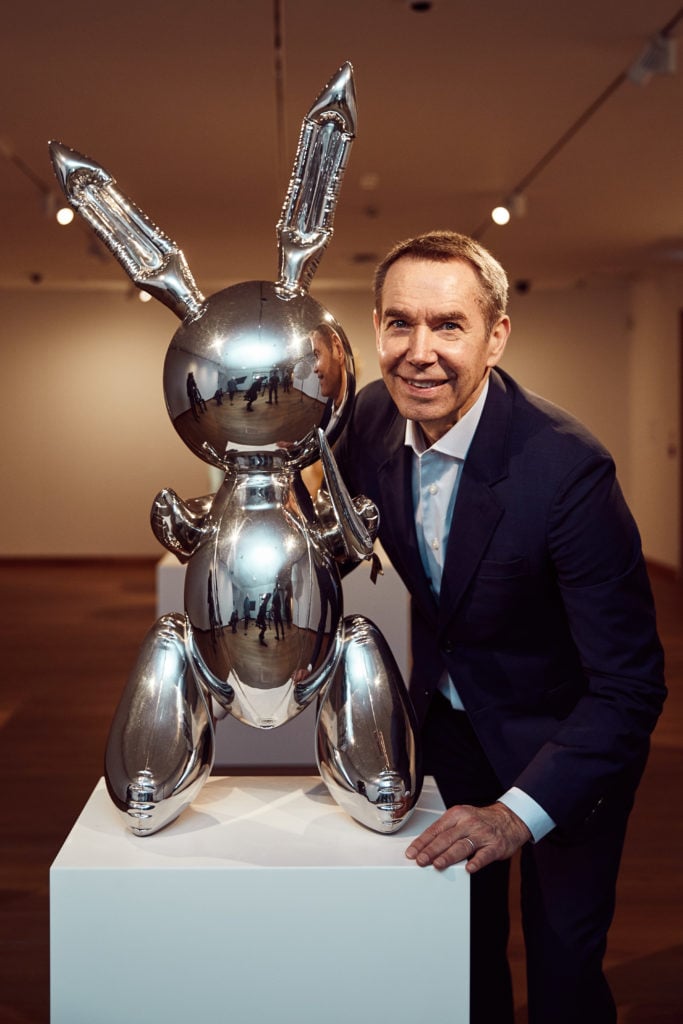
Jeff Koons with Rabbit (1986). Photo © David Fisher, 2019.
Koons also fielded some questions about recent layoffs at his studio, which is part of a shift towards automation and technological precision in his practice.
“My work has become very based on computer data, and the engineering and reverse engineering of that data,” he explains.
He has a team of in-house programmers and much of what they create is now manufactured off-site. “It’s just using computer technology and the machinery that we have today to function as a tool to make something that’s precise,“ he says. While he denies that he is a “perfectionist,” it is clear that he cares about details. Working in this way, he says, “I can be more responsible for every thousandth of a milimeter.”
“JEFF KOONS” is on view February 7 through June 9 at the Ashmolean Museum of Art and Archaeology, Oxford.